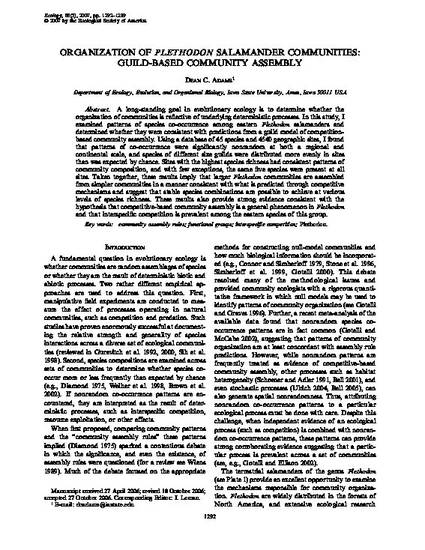
A long-standing goal in evolutionary ecology is to determine whether the organization of communities is reflective of underlying deterministic processes. In this study, I examined patterns of species co-occurrence among eastern Plethodon salamanders and determined whether they were consistent with predictions from a guild model of competition-based community assembly. Using a database of 45 species and 4540 geographic sites, I found that patterns of co-occurrence were significantly nonrandom at both a regional and continental scale, and species of different size guilds were distributed more evenly in sites than was expected by chance. Sites with the highest species richness had consistent patterns of community composition, and with few exceptions, the same five species were present at all sites. Taken together, these results imply that larger Plethodon communities are assembled from simpler communities in a manner consistent with what is predicted through competitive mechanisms and suggest that stable species combinations are possible to achieve at various levels of species richness. These results also provide strong evidence consistent with the hypothesis that competitive-based community assembly is a general phenomenon in Plethodon and that interspecific competition is prevalent among the eastern species of this group.
Available at: http://works.bepress.com/dean-adams/13/

This article is from Ecology 88 (2007): 1292, doi:10.1890/06-0697. Posted with permission.